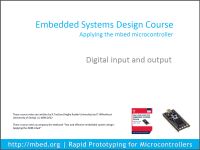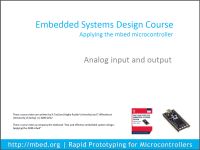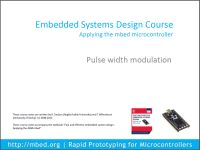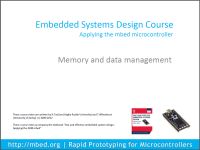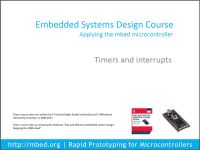Course Notes
The mbed platform is becoming widely used in academic circles for teaching embedded systems at undergraduate level, and within companies where often there is a need to self-teach or be trained in new microcontroller skills. The mbed allows quick engagement in advanced topics, and to facilitate this further we have put together a set of course notes, in the form of presentation slides, to help academic and workshop tutors teach, using mbed as the platform.
The notes are in the form of presentation slides, so can be used as standalone pre-developed content as well as taking things further with extended topics and projects.
Course Outline¶
The content of the course notes is outlined below. We have chosen the topics that allow a quick introduction to the most commonly used technologies and interfaces while providing the background design and programming skills to allow students to learn effectively.
The mbed course notes content and structure is as follows:
- Digital input and output
- Analog input and output
- Pulse width modulation
- Modular design and programming
- Parallel data and communication
- Serial communication with I2C
- Serial communication with SPI
- Timers and interrupts
- Memory and data management
There are a number of topics which have been chosen to naturally support an undergraduate course, or a workshop run over a few days. In all cases examples and exercises are provided to support hands on learning. We also hope the slides stand as a useful self learning programme for anyone new to the mbed.
"We" are Rob Toulson (Anglia Ruskin University) and Tim Wilmshurst (University of Derby), working with the mbed team. We are also the authors of the recently published textbook "Fast and Effective Embedded Systems Design: Applying the ARM mbed".
Download Slides¶
Slides can be accessed and downloaded by selecting below:
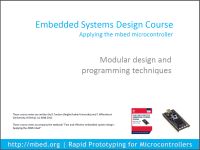 Modular Design and Programming Techniques
Modular Design and Programming Techniques
 Parallel Data and Communication
Parallel Data and Communication
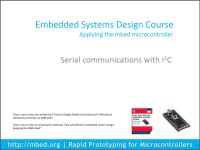 Serial Communications with I2C
Serial Communications with I2C
